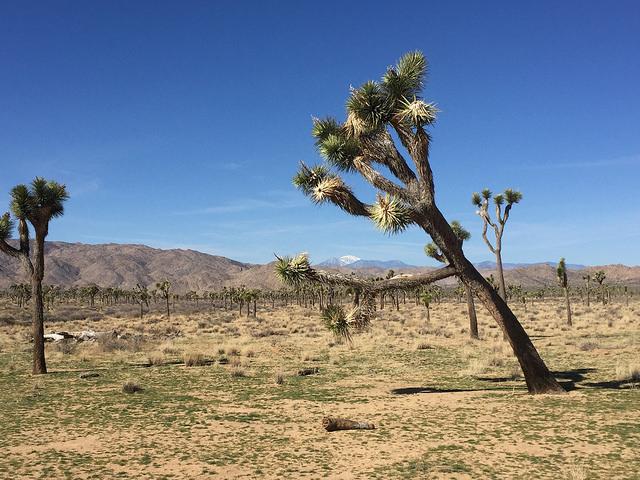America’s national parks face an uncertain future
A common sight in Joshua Tree National Park.
February 6, 2017
Last year marked the centennial celebration of the Organic Act, which, when signed into law by former President Woodrow Wilson, established the National Park Service (NPS).
A century later, the NPS is thriving, attracting hundreds of millions of visitors each year to over 400 individual sites. 2016 alone saw a third straight year of record attendance, increasing over 7 percent from 2015.
A November 2015 study conducted by Pew Research Center rated the NPS as the second-most favorably viewed federal agency in the United States at 75 percent. It enjoys widespread support across party lines, with 72 percent favorability from registered Republicans and 81 percent from Democrats.
But the parks are in trouble.
The USA’s new administration, ushered in by the inauguration of President Donald Trump, promised to reduce the size of the federal government “through attrition,” and it seems the NPS, through its parent the Department of the Interior, is on the chopping block.
An executive order signed by President Trump on Jan. 23 ordered a freeze on all federal hiring for at least 90 days, with certain exceptions. It seems, according to a list of exemptions issued Jan. 31 by the US Office of Management and Budget, that the freeze won’t include short-term employees “necessary to meet traditionally recurring seasonal workloads.”
This exemption certainly comes as a sigh of relief for the National Park Service, which relies heavily on seasonal employment to shoulder increased visitation in the summer months. Seasonal positions include park rangers, fee collectors, guides, law enforcers and firefighters, without many of which the parks would struggle to function.
The status of any currently vacant permanent positions is still up in the air, however.
This is a fragile time in the realm of public federal land. Many parks are in desperate need of infrastructure repair, according to a deferred maintenance report released by the NPS at the end of the 2015 fiscal year.
Some in Washington are hoping to take advantage of the weakened state of the parks. On Jan. 24 Rep. Jason Chaffetz (R-Utah) introduced a bill that called for the “disposal of 3.3 million acres of public land” that he claimed “deemed to serve no purpose for taxpayers.” Widespread backlash from environmental groups led to his withdrawal of the bill only a week later.
Rep. Paul A. Gosar (R-Ariz.) submitted a resolution on Jan. 30 calling for the repeal of a Nov. 2016 update to the 9B regulations that give the NPS the right to deny drilling rights to parties that own resources underneath the surface of certain national parks.
The national parks are a treasured part of the fabric of this nation and provide joy and serenity to hundreds of millions of Americans every year. Tourism to the parks stimulated the national economy to the tune of $32 billion in 2015, supporting over 295 thousand jobs that same year.
Just one down year – destabilized by understaffing and lack of resources – could give their detractors the ammo they need to cut funding or sell off land.
The national parks have been called “America’s Best Idea,” but they are not invulnerable. It is imperative that they continue to enjoy the support that they need.






































































